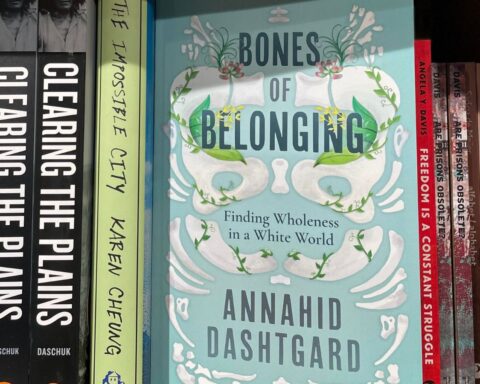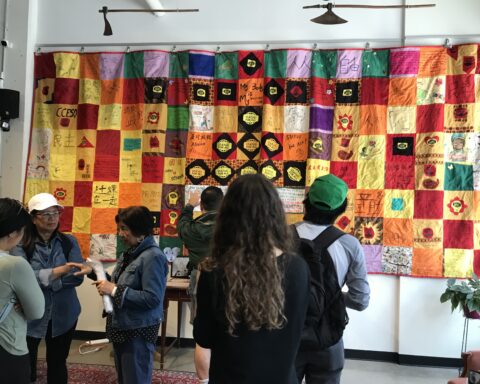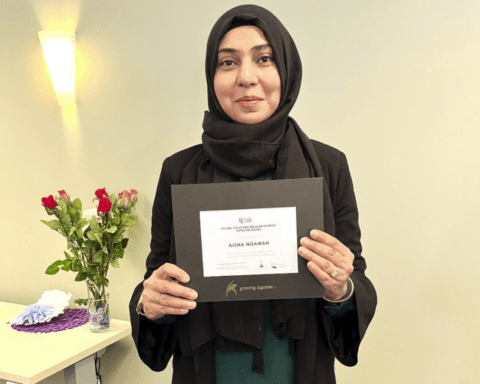Lynne Kutsukake’s The Translation of Love is as haunting as it is beautiful. Set in post-WWII Japan, the novel touches upon migration and identity issues as pertinent today as they were in 1946.
It is also a rare account of one of the most under-reported and darkest periods of Canadian history – when Japanese Canadians were categorized by the government as enemies and forcibly removed from their homes.
After the Japanese attack on a U.S. naval base in Pearl Harbor, the Canadian government ordered the removal of male Japanese Canadians from 18 to 45 years of age from the coast of British Columbia.
Those displaced were put in shoddy internment camps in B.C.’s interior and Alberta. Camps were often made of barns or animal stalls.
Others were deported to Japan. Some 23,000 people had their property confiscated and were detained without charge or trial.
Some 23,000 people had their property confiscated and were detained without charge or trial.
Life in Occupied Japan
This is the pulsing backdrop to Kutsukake’s plot: the story of 13-year-old Aya Shimamura’s repatriation to Japan with her father after her mother suddenly dies.
But there is little respite in Tokyo. As her father works long hours, Aya is often left alone. At school, she is bullied for being a foreigner and speaking poor Japanese.
Only one child, a feisty girl named Fumi Tanaka, befriends her – but only to enlist Aya’s perfect English skills to help her find her older sister who has mysteriously disappeared.
Together, Fumi and Aya write a letter to General MacArthur, the American military commander who oversaw the U.S. occupation of Japan from 1945 to 1951. Theirs is one of many letters written by Japanese citizens seeking guidance in the aftermath of the bombing of Pearl Harbor and subsequent U.S. nuclear attacks on the cities of Hiroshima and Nagasaki.
Sending letters of hope
The letters are remarkable in how they vividly capture the cultural norms – and oddities – of post-war Japan. Topics range from sugar shortages to the difficulty in obtaining train tickets; from the evils of prostitution to the high cost of soya sauce.
General MacArthur himself never appears as a character in the book, perhaps adding to some of his mystique. Instead, readers are introduced to his trusty Japanese-American translator, Corporal Matt Matsumoto.
“Some were not kind: ‘Get out Americans.’ Some letters were written in blood.”
Matsumoto is reserved, almost stiff at times, but inwardly feels the heavy burden of every letter-writer he translates – not always accurately – for General MacArthur.
“Most letters,” Matsumoto relates, “came in envelopes sealed shut with sticky rice glue, but some were rolled up like scrolls and tied with string. Others were folded so many times they looked like strange forms of origami. Some were not kind: ‘Get out Americans.’ Some letters were written in blood.”
His reflections on the power of words are poignant. At times, they are chillingly reminiscent of the desperation seen in the faces of Syrian refugees today, who take unimaginable risks to travel to European countries for a better life.
“It was frightening how many people were writing,” Matsumoto laments upon receiving yet another mountain of letters. “Awe-inspiring, but frightening. Such faith in the power of written supplication, such faith in the power of words. There it was, a gigantic mountain of hope.”
Matsumoto’s colleague is also an enigmatic character. Nancy Nogami is a cheery Japanese-American typist impatiently waiting to return to the U.S. and seems to take a liking to Matsumoto – or at least an appreciation for his down-to-earth, subdued persona, which contrasts sharply with the boisterous American GIs (a military term for American soldiers).
Like Aya, Matsumoto and Nogami’s characters struggle with the complexities of their Japanese-American and Japanese-Canadian identities. It’s interesting to see how Aya and Nogami, upon meeting, immediately develop a sisterly kinship – a reflection of just how much easier it is for second-generation immigrants to identify with each other than it is for them to assimilate with young people ‘back home.’
The exploitation of women in Japan is not a unique case.
Abuse of women in conflict
The gripping search for Fumi’s ‘missing’ older sister, Sumiko, through dance halls, the black market, and the dark corners of Love Letter Alley – where Japanese women go to get notes from GI boyfriends translated – is perhaps what keeps readers most intrigued.
Over time, Fumi realizes that Sumiko, like thousands of other Japanese young women at the time, felt compelled to leave home and make a living in Japan’s high-collar entertainment industry that began thriving in light of its American ‘guests.’ Selected by a club manager from a ration line in 1946, Sumiko didn’t accept the job offer immediately.
“It wasn’t until Fumi developed beriberi and required special injections their parents couldn’t afford that she brought out the business card he had given her,” Kutsukake writes.
The exploitation of women in Japan is not a unique case. Over and over in post-conflict societies, women and girls fall prey to sexually exploitative situations – illegal or otherwise – that often save their families from impoverishment.
It’s a phenomenon that thrived in post-war Japan, flourished in post-Saddam Iraq under U.S. occupation, and is growing on the battlegrounds of Syria today.
At its core, The Translation of Love is a story as much about pride and dignity in the face of oppression and humiliation as it is about the dark effects of discrimination, poverty and war.
Shenaz Kermalli is a freelance writer and journalism instructor at Humber College. She holds an MA Middle Eastern Studies and has previously worked at BBC News in London, Al Jazeera English and CBC News.





